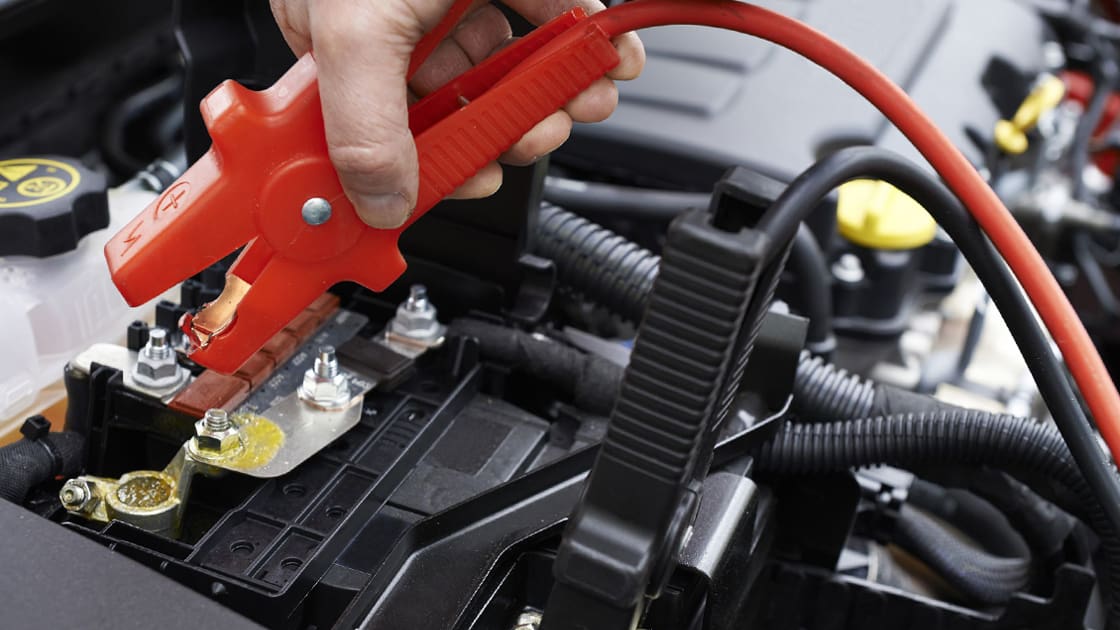The question “What size jump starter do I need?” has always been giving buyers a hard time when it comes to getting a jump starter. Unlike the common assumption, a jump starter size depends on not only the vehicle’s energy consumption but also other factors that you would never think of. So are you curious about these factors?
Our article would thus, be useful for you as it is going to put some of the relevant factors under scrutiny and analyze them one by one.
So, let’s get into the major points and find out the most important factor!
The Factor That Decides Everything – Cold Cranking Cramps

Even if you break your neck trying to start it, your car will not move an inch if there isn’t enough power to fuel the engine. And that’s why the Cold Cranking Amps (CCA) is considered the most vital factor to consider when buying a jump starter as it presents how much power the item can manage.
Let’s start by finding out what Cold Cranking Amps is!
Theoretically, Cold Cranking Amps is the maximum power a jump starter can put out for 30 seconds when the temperature drops to -18oC, yet still maintaining the current of the battery at least 7.2 volts.
When purchasing hand-tooled items like a bandsaw or a generator, the suitable horsepower of the engine is always on the top of the consideration list as it shows how much a machine can manage and thus plays a vital role in deciding the product’s size.
That being so, the specific Cold Cranking Amps which come along with a jump starter will be the first factor to choose this item’s size. This is because the more Cold Cranking Amps a jump starter holds, the more powerful it is.
What Size Jump Starter Do I Need – What Else To Consider?
Cold Cranking Amps might be a vital factor, but it will be a shortcoming depending solely on it to get the right size for your jump starter. There are many other elements that should be factored in.
Weather conditions
As you can notice from its name, the Cold Cranking Amps is adequately estimated to show the right amps needed to operate your car in the extreme months of winter.
Jump starters do not act up when it gets hot outside, but the cold weather is another story. So, what you need to do here is observe the weather conditions and choose your jump starter whose CCA is higher than what you normally use if there is a sign that the temperature in your area is about to drop.
Vehicle Type
It will be all for naught if you purchase a 1000A jump starter for a low-volume car, such as the Toyota Corolla or Ford Focus. So buyers should discern that it depends on the car size to decide which Cold Cranking Amps will be suitable for your engine. Here is the general result we have obtained through research on certain kinds of vehicles.
- For small-size cars like Honda Civic or Kia Forte: 400A
- For medium-size cars or personal watercraft: 500 – 600A
- For cars like the Camaro and Mustang, which holds V8 engine models or canoe: 700 – 800A
- For trucks, large-scale boats, or mining equipment: 900 – 1000A
This is how you can get a jump starter with the size that your car can handle. Just stick to the one with amps a bit higher than the standard requirement in case you might change your vehicle or need to operate many vehicles at the same time. However, it is not advisable to buy a jump starter with 300A higher than the recommendations.
Another feature to consider is the type of fuel your car consumes. Almost every car you see these days either runs on gasoline or diesel And from certain surveillance, it is concluded that a diesel engine utilizes more energy than a gasoline one.
Thus, you may need to figure out your fuel type first. And if you find the need to raise the Cold Cranking Amps level because of the wasteful fuel consumption, you will need to go for a size up from the usual jump starter.
Vehicle Age
This might be a surprising factor as many people as they think the car engine would remain intact after years due to their careful maintenance. Yet, no matter how regularly you give your vehicle a checkup, its parts and accessories wear down and function more poorly over the years.
Another reason why the vehicle age needs to be taken into account is the advancement in technology, which will lead to your vehicle’s obstacle in catching up with it.
In other words, if your vehicle is rather old and fogy, it might take more time to operate, and thus, the jump starter should be a heavy-duty one to save time and electricity required to overcome the rusty and slow-operating engine.
On the other hand, all these calculations will not be that necessary if your car is just newly purchased and is equipped with the most modern parts and engine. A medium-sized jump starter will now meet your need.
Battery Of The Jump Starter
A jump starter battery is often divided into 2 types: the Lithium-Ion battery and the Lead-Acid one.
The Lead-Acid battery is not so popular nowadays as it can lose up to 50% of its cranking power in a harshly cold climate. Besides, it takes up considerable space inside the jump start and is quite substantial as lead is quite heavy itself.
On the contrary, Lithium-ion wins users’ preference as it offers not only lighter construction but also highly-effective energy consumption.
Both of these kinds holds its strength and weakness, yet, the Lithium-Ion battery wins the fight as it has been properly modernized to be smaller yet more robust and durable.
So, if you intend to possess a small-sized jump starter to store under your seat or in your glove box, a lithium-ion jump starter of adequate size would be an excellent choice. Or if you are fine with the Lead-Acid one, a bigger jump starter will always be a good choice.
Related:
- How Many Amps Is A Car Battery to Ramp up Your Engine?
- Peak Amps Vs Cranking Amps Vs Cold Cranking Amps Jump Starters
- How To Use A Jump Starter: Detailed Guideline For The Unprofessional
- Big Question Of The Day: How Many Amps To Jumpstart A Truck?
Other Features
These above-mentioned variables are the most vital aspects that need to be factored in when choosing a proper jump size for your vehicles. However, that is not enough. The following factors, despite being minor ones, still play a contributory part in your jumpstart’s size selection.
1. The Air Compressor:
The small-sized jump starter is often not facilitated with an air compressor. Yet, a vast majority of customers said they even used this more than the jump starter. This is because the air compressor will inform you whether your tires’ air pressure in your low or not. Hence, you won’t need to find a gas station and have your tires filled.
All in all, if you need an air compressor with you, you will have to buy a medium or large-scale jump starter.
2. The Charger:
Most of the jump starters come with a battery and a charger. If a jump starter is equipped with a Lithium-Ion battery, there will be a USB charger coming along.
This USB charger is really convenient as it will charge the jump starter itself whenever the energy level hits the bottom. So, what is the point here? A Lithium-Ion battery is often smaller than a Lead-Acid one, and thus, if you want a USB charger, the size of your jump starter will be smaller.
3. The Flashlight:
Some jump starter comes with a flashlight, which will be bigger than the starter without one.
However, this flashlight is not as versatile as it is fixed to the jump starter’s case. Thus, many people found using a regular light would be handier.
Bottom Line
Our lengthy but informative post coming to an end means that you have grasped all the messages we want to transmit. Then, all the necessary factors that needed to be considered are now in your ability.
All in all, I hope you can answer the question “What size jump starter do I need?” and find the most trustworthy jump starter that suits your vehicle best. So, what are you waiting for but not getting out there and letting your wisdom manage the rest?
Drop a comment if you find this helpful!
Further Reading:
WHAT'S NEW
The best AGM battery chargers will be the ideal option to revive your flat battery without relying on professional help. These handy high-tech chargers are extremely beneficial because they offer...
The Genius Boost GB40 is popular because of its ability to help boost your vehicle when it has battery issues. Many of our customers wonder why the Noco GB40 can work greatly like so. So, we have...

